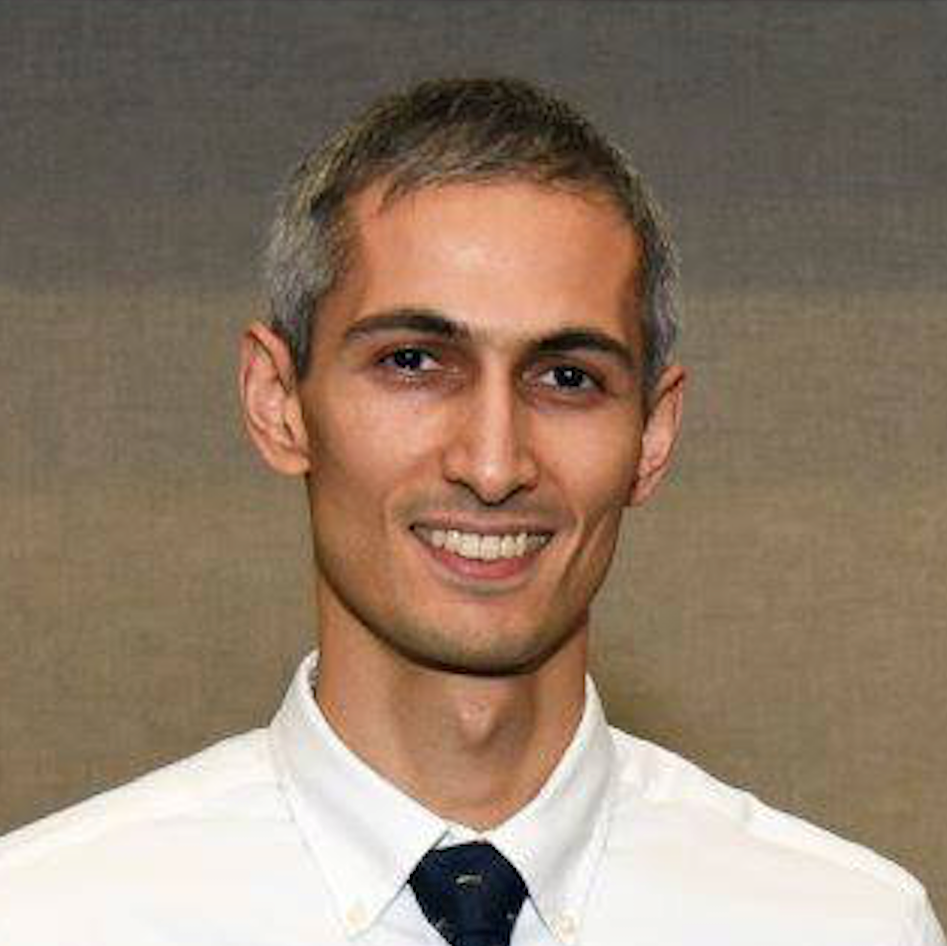CPC: Another Day, Another Headache (Or Not)
* You will be redirected to the BCM DCPD credit management site when claiming credit and may be asked to register or log in.
In this Clinicopathological Conference (CPC), Dr. Vladislav Jdanov presents the case of a 77-year-old man with a history of hypertension and lacunar infarct who presented to the emergency department with progressive headache for the previous eight days, nausea, vomiting, decreased PO intake, and weakness. Dr. Laura Gammon serves as the case discussant, and Dr. Rodrigo Hasbun serves as the expert discussant.
This Department of Medicine Grand Rounds session took place on Thursday, October 31, 2024 at 12:15 p.m.
Activity Information
How to Claim Credit
You may claim credit after watching this activity.
You will be redirected to the BCM DCPD credit management site when claiming credit and may be asked to register or log in.
Needs Statement
Faculty and trainees within the Department of Medicine who are involved in the care of patients need to receive regular updates on recent advances and guidelines in the field of internal medicine. Clinical scenarios will be used to review the current management of common medical conditions, including chronic pain and opioid abuse. Multidisciplinary sessions will also be used to educate learners about human trafficking and the role of physicians in identifying and assisting victims in the community. The overall aim of the series is to advance clinical knowledge, enhance the quality of patient care, and improve treatment outcomes.
Educational Objectives
At the conclusion of the activity, the participants should be able to:
- Recognize red flag symptoms for headache.
- Interpret the results of a lumbar puncture.
- Demonstrate greater understanding of the differential diagnosis of persistent headache.
Target Audience
Professional Categories
- Physicians
- Medical Students
- Fellows
- Residents
- Other Health Professionals
Specialties
- Internal Medicine
Interest Groups
- Hospital Medicine
Activity Evaluation
Evaluation by questionnaire will address program content, presentation, and possible bias.
Educational Methods
- Lectures
Accreditation/Credit Designation
Baylor College of Medicine is accredited by the Accreditation Council for Continuing Medical Education (ACCME) to provide continuing medical education for physicians.
Baylor College of Medicine designates this enduring material activity for a maximum of 1.00 AMA PRA Category 1 Credit™. Physicians should claim only the credit commensurate with the extent of the participation in the activity.
Activity Director
Term of Approval
October 1, 2024 through October 31, 2026. Original release date: October 1, 2024.
Disclosure Policy
Baylor College of Medicine (BCM) is accredited by the Accreditation Council for Continuing Medical Education (ACCME) to provide continuing medical education (CME) for physicians. BCM is committed to sponsoring CE activities that are scientifically based, accurate, current, and objectively presented.
In accordance with the ACCME Standards for Commercial Support, BCM has implemented a mechanism requiring everyone in a position to control the content of an educational activity (i.e., directors, planning committee members, faculty) to disclose any relevant financial relationships with commercial interests (drug/device companies) and manage/resolve any conflicts of interest prior to the activity. Individuals must disclose to participants the existence or non-existence of financial relationships at the time of the activity or within 24 months prior.
In addition, BCM has requested activity faculty/presenters to disclose to participants any unlabeled use or investigational use of pharmaceutical/device products; to use scientific or generic names (not trade names) in referring to products; and, if necessary to use a trade name, to use the names of similar products or those within a class. Faculty/presenters have also been requested to adhere to the ACCME's validation of clinical content statements.
BCM does not view the existence of financial relationships with commercial interests as implying bias or decreasing the value of a presentation. It is up to participants to determine whether the relationships influence the activity faculty with regard to exposition or conclusions. If at any time during this activity you feel that there has been commercial/promotional bias, notify the Activity Director or Activity Coordinator. Please answer the questions about balance and objectivity in the activity evaluation candidly.
All of the relevant financial relationships listed for these individuals have been mitigated.
Do TP, Remmers A, Schytz HW, et al. Red and orange flags for secondary headaches in clinical practice: SNNOOP10 list. Neurology. 2019;92(3):134-144. doi:10.1212/WNL.0000000000006697.
Pilat D, Sekoul D. Framing effect. The Decision Lab. 2021. Accessed January 2, 2025.
Yazdi S. What is availability heuristic in UX? 3 tips to minimize its effect on our design decisions! Medium. February 22, 2023. Accessed January 2, 2025.
van Soest TM, Horst LT, Chekrouni N, et al. A risk score for identifying patients at a low risk of bacterial meningitis amongst adults with cerebrospinal fluid leucocytosis and a negative gram stain result: a derivation and validation study. Clin Microbiol Infect. 2023;29(3):360-365. doi:10.1016/j.cmi.2022.10.001.
Leis AA, Stokic DS. Neuromuscular Manifestations of Human West Nile Virus Infection. Curr Treat Options Neurol. 2005;7(1):15-22. doi:10.1007/s11940-005-0002-6.
Hart J Jr, Tillman G, Kraut MA, et al. West Nile virus neuroinvasive disease: neurological manifestations and prospective longitudinal outcomes. BMC Infect Dis. 2014;14:248. Published 2014 May 9. doi:10.1186/1471-2334-14-248.
Murray KO, Nolan MS, Ronca SE, et al. The Neurocognitive and MRI Outcomes of West Nile Virus Infection: Preliminary Analysis Using an External Control Group. Front Neurol. 2018;9:111. Published 2018 Mar 27. doi:10.3389/fneur.2018.00111.
Roberts JA, Kim CY, Dean A, et al. Clinical and Diagnostic Features of West Nile Virus Neuroinvasive Disease in New York City. Pathogens. 2024;13(5):382. Published 2024 May 3. doi:10.3390/pathogens13050382.
Venkatesan A, Tunkel AR, Bloch KC, et al. Case definitions, diagnostic algorithms, and priorities in encephalitis: consensus statement of the international encephalitis consortium. Clin Infect Dis. 2013;57(8):1114-1128. doi:10.1093/cid/cit458.
Gundamraj V, Hasbun R. Viral meningitis and encephalitis: an update. Curr Opin Infect Dis. 2023;36(3):177-185. doi:10.1097/QCO.0000000000000922.
Granillo A, Le Maréchal M, Diaz-Arias L, Probasco J, Venkatesan A, Hasbun R. Development and Validation of a Risk Score to Differentiate Viral and Autoimmune Encephalitis in Adults. Clin Infect Dis. 2023;76(3):e1294-e1301. doi:10.1093/cid/ciac711.
Habis R, Kolchinski A, Heck AN, et al. Absence of Cerebrospinal Fluid Pleocytosis in Encephalitis. Clin Infect Dis. Published online August 3, 2024. doi:10.1093/cid/ciae391.
Bhimraj A, Hasbun R. Diagnostic approach and update on encephalitis. Curr Opin Infect Dis. 2022;35(3):231-237. doi:10.1097/QCO.0000000000000832.
Vanichanan J, Salazar L, Wootton SH, et al. Use of Testing for West Nile Virus and Other Arboviruses. Emerg Infect Dis. 2016;22(9):1587-1593. doi:10.3201/eid2209.152050.
Weatherhead JE, Miller VE, Garcia MN, et al. Long-term neurological outcomes in West Nile virus-infected patients: an observational study. Am J Trop Med Hyg. 2015;92(5):1006-1012. doi:10.4269/ajtmh.14-0616.
Hasbun R, Garcia MN, Kellaway J, et al. West Nile Virus Retinopathy and Associations with Long Term Neurological and Neurocognitive Sequelae. PLoS One. 2016;11(3):e0148898. Published 2016 Mar 7. doi:10.1371/journal.pone.0148898.
Garcia MN, Hause AM, Walker CM, Orange JS, Hasbun R, Murray KO. Evaluation of prolonged fatigue post-West Nile virus infection and association of fatigue with elevated antiviral and proinflammatory cytokines. Viral Immunol. 2014;27(7):327-333. doi:10.1089/vim.2014.0035.
The latest in nutrition related research. NutritionFacts.org. Accessed January 2, 2025.
Disclosures
The following individual(s) has/have reported financial or other relationship(s) with commercial entities whose products/services may relate to the educational content of this activity:
Presenters
-

Laura Gammon, M.D.
Assistant Professor of Internal Medicine
Baylor College of Medicine
Disclosure:
Nothing to disclose.
-

Rodrigo Hasbun, M.D., M.P.H.
Professor of Infectious Diseases
University of Texas John P. McGovern Medical School
Disclosure:
- Research Support: Biomeriaux
- Consultancy: Biomeriaux
-
Vladislav D. Jdanov, M.D.
Internal Medicine Resident
Baylor College of Medicine
Disclosure:
Nothing to disclose.
Activity Director
Planning Committee Members
-

-
David Crawford, M.D.
Chief Internal Medicine Resident
Baylor College of Medicine
Disclosure:
Nothing to disclose.
-

Richard J. Hamill, M.D.
Professor
Baylor College of Medicine
Disclosure:
- Research Support: Pfizer Pharmaceuticals
- Contractor (including contracted research): PPD Development, LLP.
- Advisory Committee Membership: PriMed Southwest
- Honorarium Recipient: PriMed Southwest
- Intellectual Property (patent rights, royalty payments): McGraw Hill
-

-
Kevin Milligan, M.D.
Chief Internal Medicine Resident
Baylor College of Medicine
Disclosure:
Nothing to disclose.
-

Zaven Sargsayan, M.D.
Associate Professor
Baylor College of Medicine and Ben Taub Hospital
Disclosure:
Nothing to disclose.
-

Stephanie Sherman, M.D.
Associate Professor
Baylor College of Medicine
Disclosure:
Nothing to disclose.
Health Topics
Presenters:

